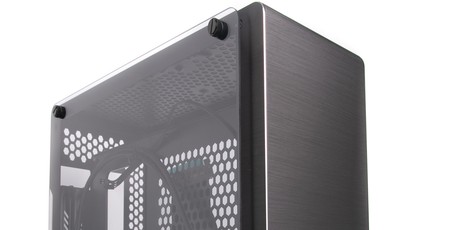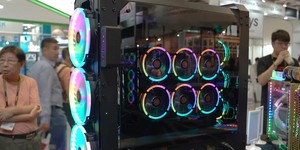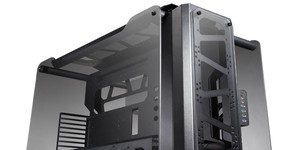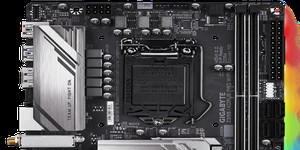
Interior
With the graphics card area stretching the length of the case, the PSU shares the same chamber as the motherboard and this can pose issues with cable tidying, as there isn't really anywhere to stow them except around the PSU itself. We also found the easiest and most aesthetically pleasing route for the PCIe power cables was to feed them over the top of the motherboard tray, but this meant they kept fouling the fans we'd installed to gauge space. There's 90mm of CPU cooler clearance, and with no way to mount an AIO liquid cooler in the standard Ophion, you'll need to make the most of that, especially if you'll be overclocking.

It's a shame a small U-shaped cut out couldn't have been made above the perforations in the motherboard tray, as this would have solved the issue at a stroke.The PCIe riser cable is threaded underneath the motherboard to the other side of the case, with the mount for the graphics card located low enough to allow monster-wide cards to be installed with the mount itself acting as a support for the card along with the expansion slots.

There's a small gap under the motherboard tray for routing cables, so this is probably the best way to avoid fouling any roof fans you install - if your cables are long enough that is. The roof is one location you can install fans, but you do get an additional 120mm mount in the base of the case - that's two more than the Metis, and with the larger Ophion Evo there's enough clearance above the motherboard tray to house a 240mm AIO liquid cooler, so plenty of scope in terms of cooling for housing a high-end overclocked PC.


MSI MPG Velox 100R Chassis Review
October 14 2021 | 15:04








Want to comment? Please log in.